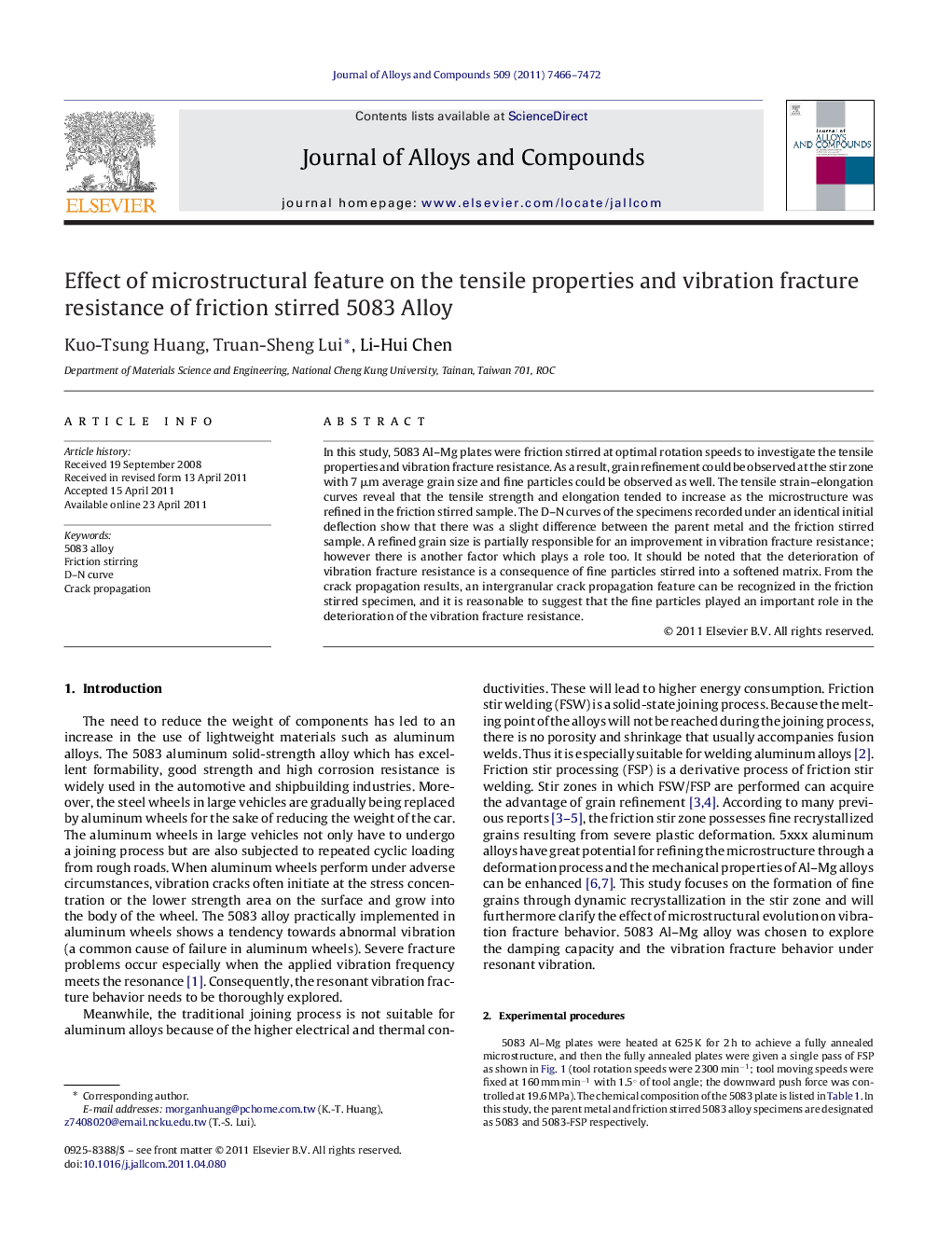| Article ID | Journal | Published Year | Pages | File Type |
|---|---|---|---|---|
| 1617515 | Journal of Alloys and Compounds | 2011 | 7 Pages |
In this study, 5083 Al–Mg plates were friction stirred at optimal rotation speeds to investigate the tensile properties and vibration fracture resistance. As a result, grain refinement could be observed at the stir zone with 7 μm average grain size and fine particles could be observed as well. The tensile strain–elongation curves reveal that the tensile strength and elongation tended to increase as the microstructure was refined in the friction stirred sample. The D–N curves of the specimens recorded under an identical initial deflection show that there was a slight difference between the parent metal and the friction stirred sample. A refined grain size is partially responsible for an improvement in vibration fracture resistance; however there is another factor which plays a role too. It should be noted that the deterioration of vibration fracture resistance is a consequence of fine particles stirred into a softened matrix. From the crack propagation results, an intergranular crack propagation feature can be recognized in the friction stirred specimen, and it is reasonable to suggest that the fine particles played an important role in the deterioration of the vibration fracture resistance.
► In this study, 5083 Al–Mg plates were friction stirred at optimal rotation speeds to investigate the tensile properties and vibration fracture resistance. ► Grain refinement could be observed at the stir zone and fine particles could be observed as well. ► The tensile data reveal that the tensile strength and elongation tended to increase as the microstructure was refined in the friction stirred sample. ► The result suggests that the crack propagation resistance is not only grain size dependent but also fine particle dependent.
